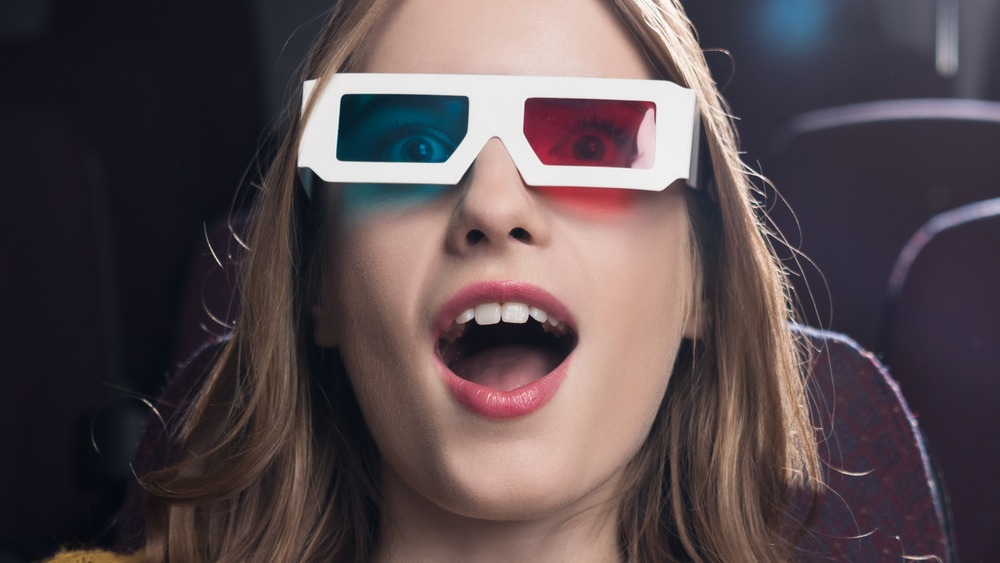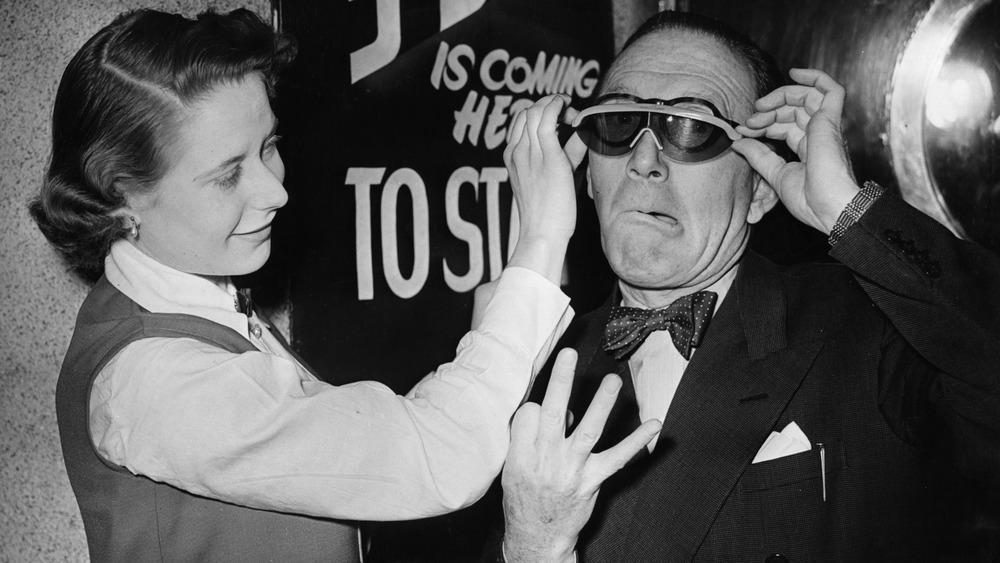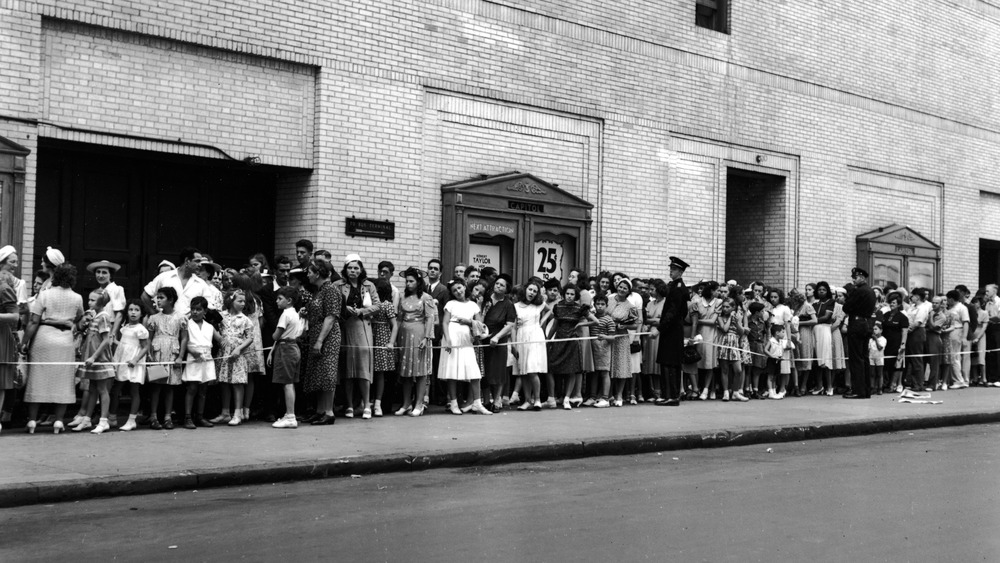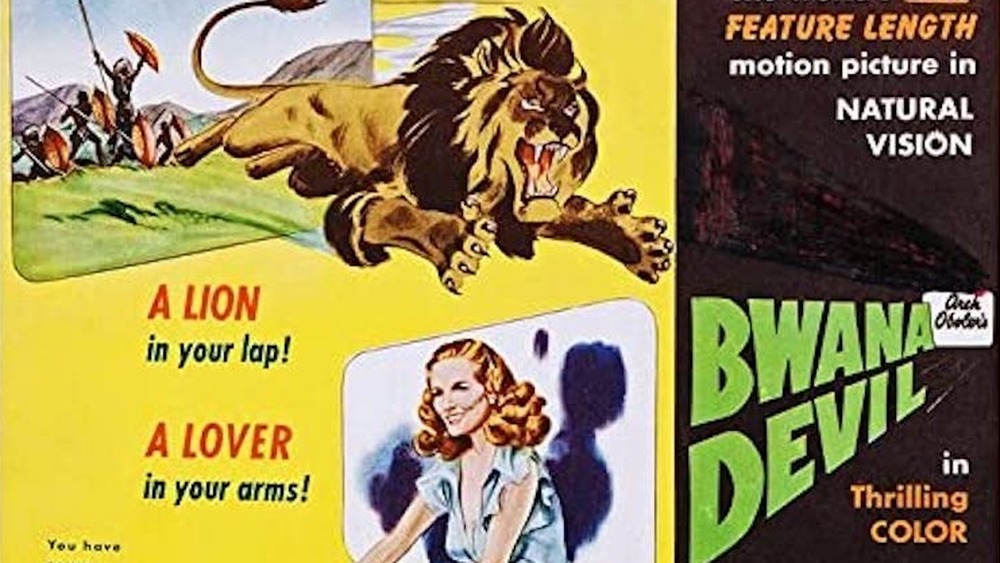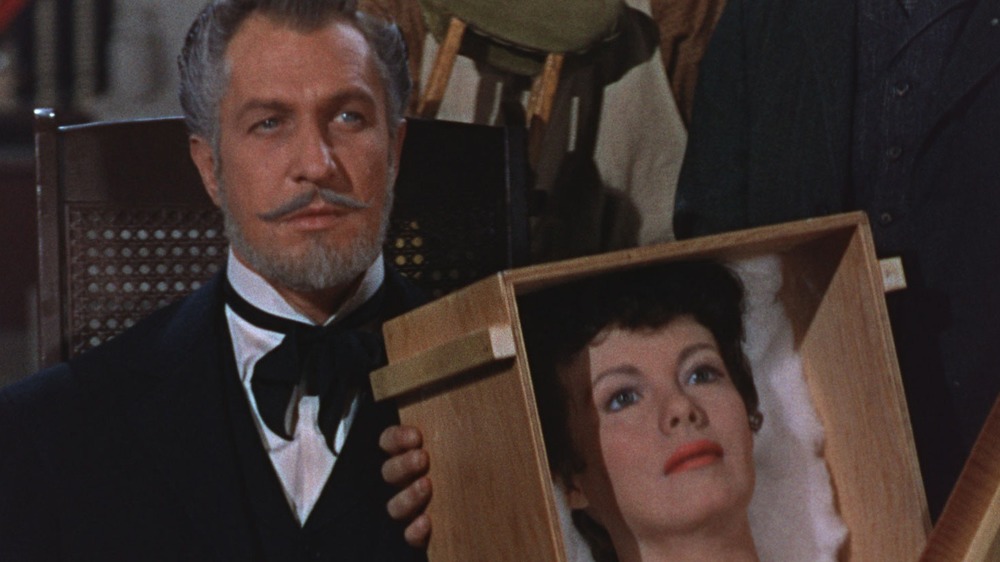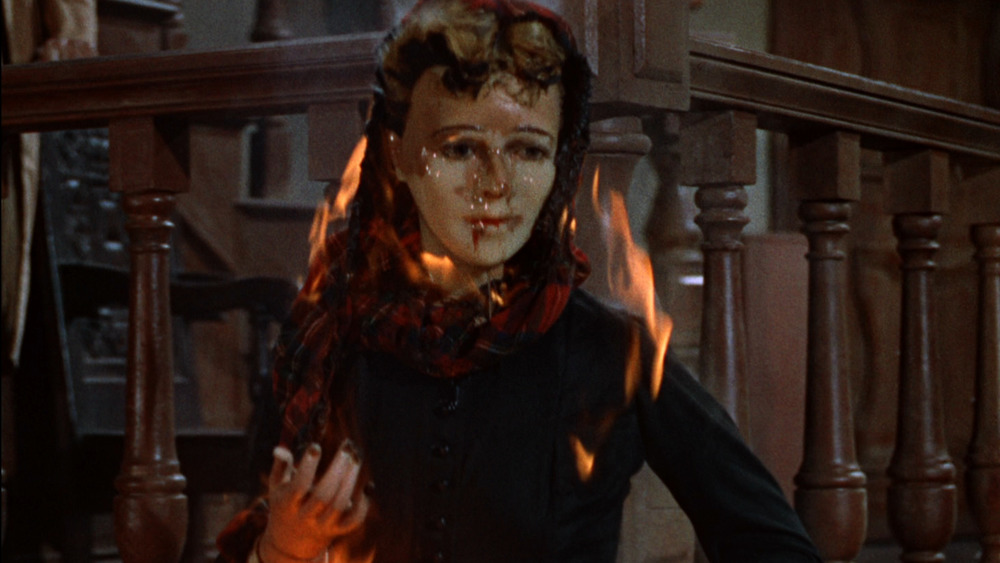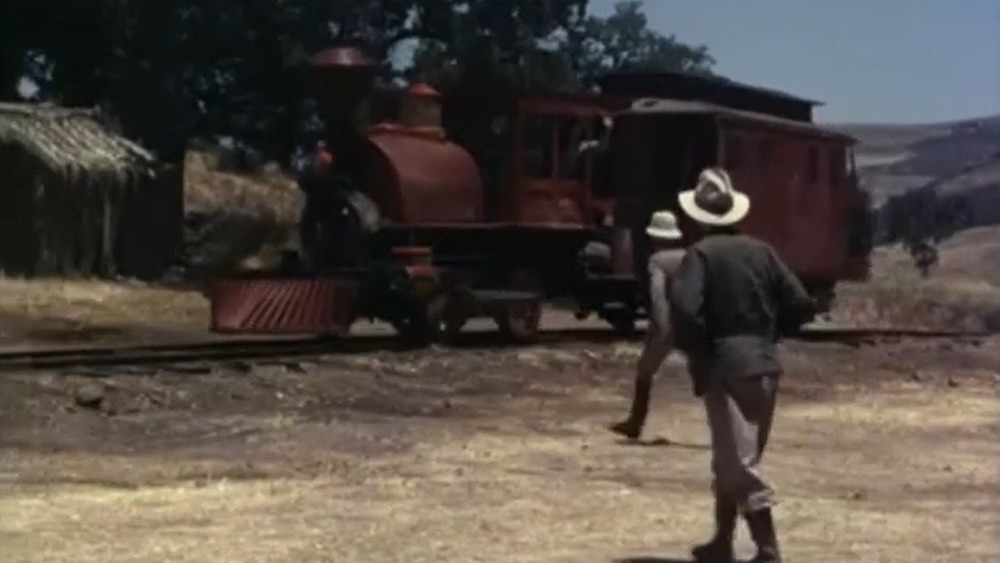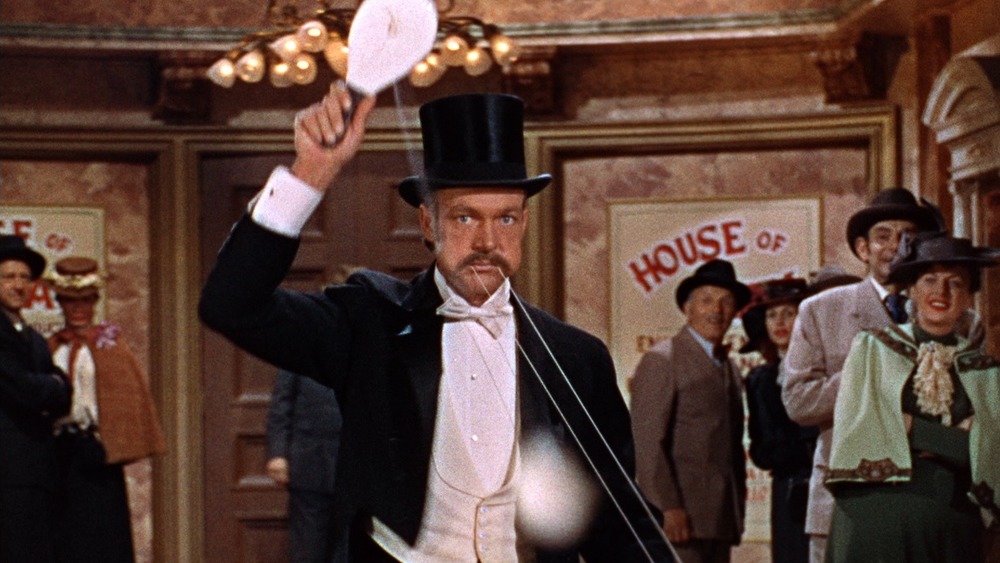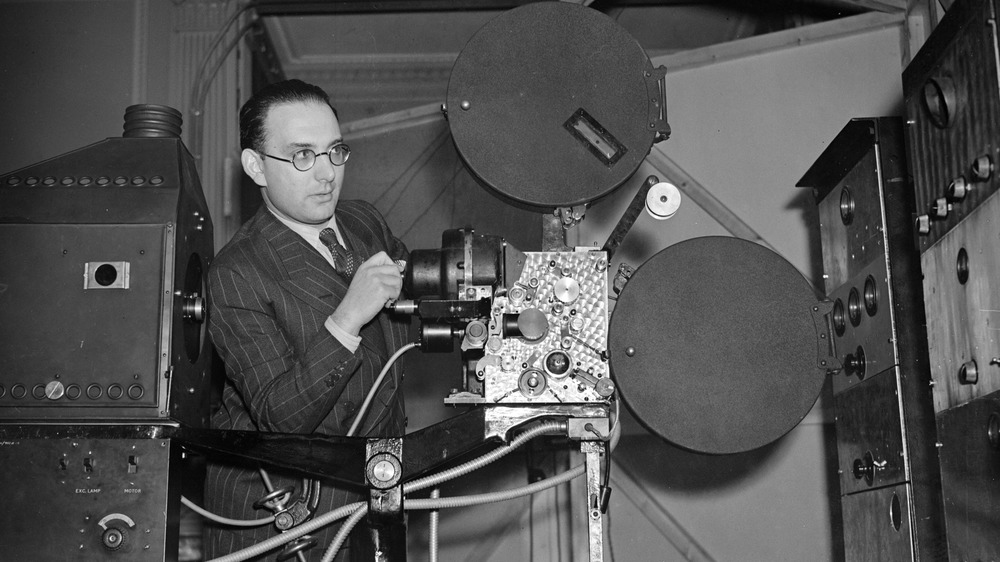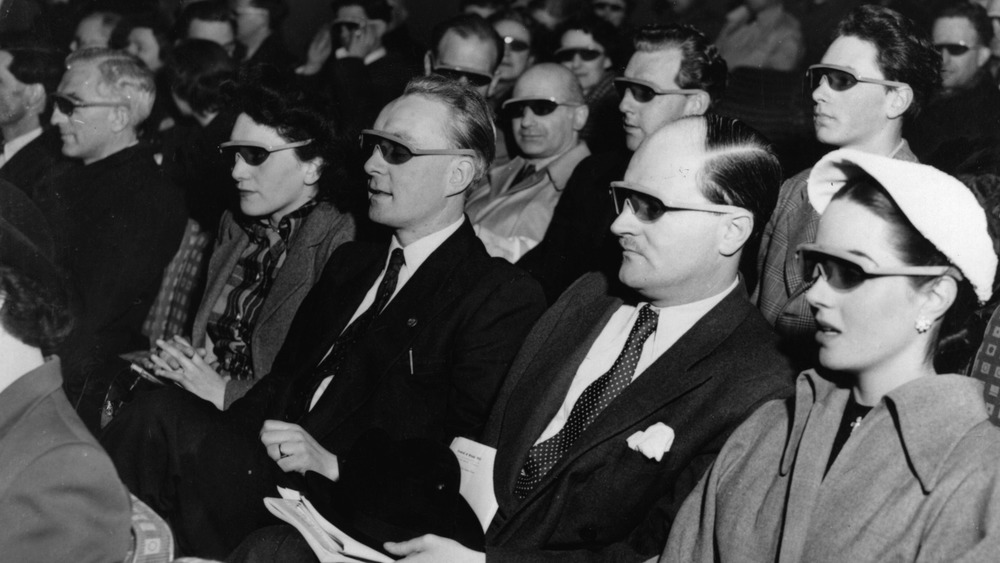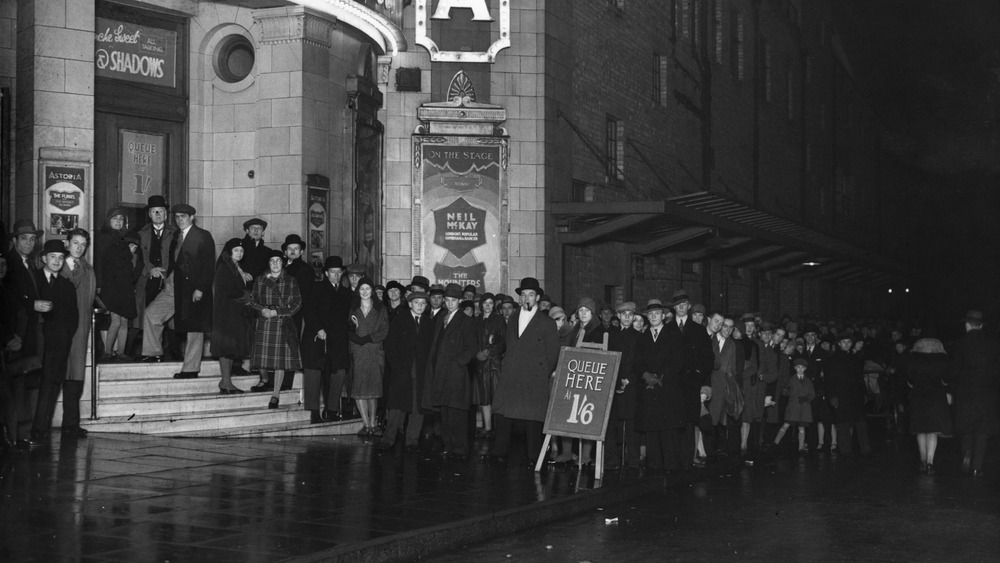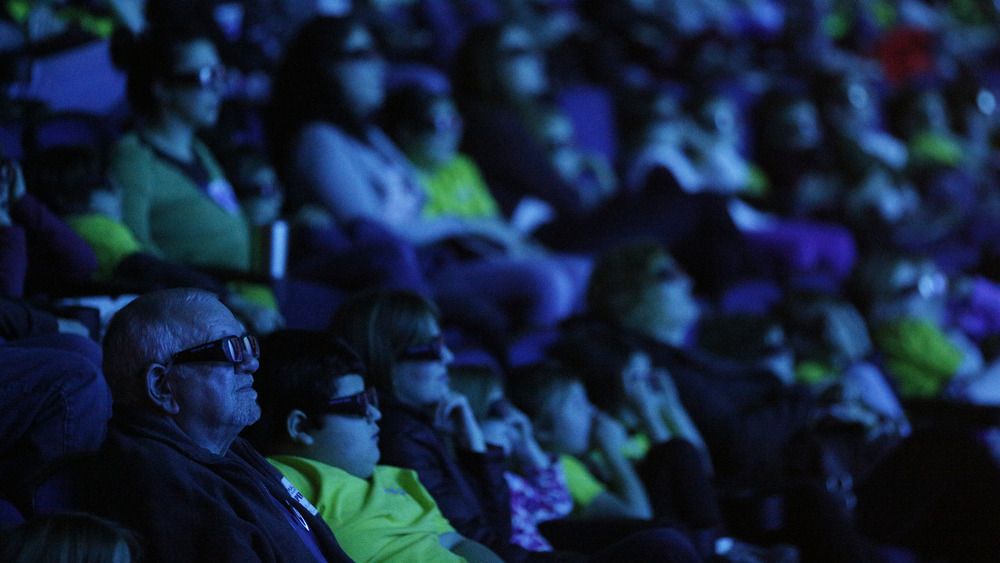What It Was Really Like To Watch The First 3D Movie In Theaters
The history of 3D films is tangled and fascinating. The technique was tested out multiple times, starting at least as early as 1915, but it took years for the process to be refined enough for wide release. Still, innovators didn't stop working to make 3D viable, and audiences didn't stop wanting it.
It took a bumpy road for 3D production to become mainstream, but when everything finally clicked, the response was electric. These movies were making cinematic history. Some even thought they might be the wave of the future. And above all else, they captured the public's attention and the industry's interest.
Of course, 3D's popularity would eventually ebb and flow, with it gradually becoming an established — if not universal — part of the movie industry. But let's go back to a time when it was still fresh cinematic trend and unfamiliar, when the moviegoers who were settling down into their seats didn't know what to expect. We'll look at what it was really like to watch the first 3D movies in theaters.
The earliest 3D audience had an exclusive experience
For decades, 3D movies were the ultimate entertainment exclusive. And the trend got started in 1922, when a romantic melodrama called The Power of Love became the first commercial 3D movie.
As you might expect, it was a hit. The Hollywood Daily Citizen reported that audiences were so delighted that they "applauded from start to finish." The technical prowess on display had everyone in awe, with the Los Angeles Examiner describing it as "an amazing advance in motion picture art," adding that "the achievement beggars description." The movie made the most of its scenery, providing viewers with grand vistas that felt impossibly close. All 200 guests — who ranged from film critics to scientists — seem to have been stunned.
But for a long time, they were the only ones who got to be stunned. According to the 3D Film Archive, The Power of Love never had a chance to get off the ground. It had one exhibition in Los Angeles and another in Newark, and then the film was lost. A 2D version called The Forbidden Lover did get a wide release, but the film's story was less important than its groundbreaking visuals. When it came to The Power of Love, you had to be there ... and almost no one was. Years would go by before most audiences had the chance to experience 3D outside of short test features. It's a time lapse that highlights how lucky the original Power of Love viewers really were.
The theaters were packed
Released in 1952, Bwana Devil told the tale of two hunters going up against some man-eating lions. It was basically a 1950s version of The Ghost and the Darkness, and on top of that, it was the first widely released 3D film (as well as being the first one in color). Needless to say, it was an instant smash hit.
At its Hollywood premiere, lines stretched around the block, and each showing continued to be successful. According to Turner Classic Movies (TCM), the film's box office numbers were so impressive that studios immediately started greenlighting new 3D movies, hoping they would keep catching lightning in a bottle.
As Motion Picture Herald wrote, "Three-dimension is a box office smash. Los Angeles is proving it beyond question and in the face of a bad press and worse weather. It's breaking records every hour on the hour." But it wasn't necessarily Bwana Devil itself that was drawing audiences in — it was the 3D, and the 3D was something studios could replicate. Every jam-packed theater gave them more reason to be intrigued ... and there were a lot of jam-packed theaters.
So if you saw one of the earliest major 3D movies, you were watching it with a crowd, and all of Hollywood was watching you. By 1952, film studios had already started worrying about TV drawing audiences away from the movies. However, 3D seemed like it could save the industry. It spiked theater attendance by giving audiences something they couldn't get at home, and it quickly became an international sensation, too.
The first big 3D movie was critic-proof
Audiences were blown away by the 3D effects of 1952's Bwana Devil. Critics, on the other hand, were almost universally dismayed.
New York Times film critic Bosley Crowther wrote an especially scathing review, saying, "The story is meagre and hackneyed — downright old-fashioned, in fact; the direction smacks strongly of slap-dash, and the acting is nigh absurd." But audiences probably weren't showing up for the story or the performances. They were there for the novelty of 3D filmmaking, which offered a kind of spectacle they couldn't get anywhere else. But Crowther slammed the visuals, too, warning his readers that the effects were shoddy and inconsistently applied and that some characters wound up followed by "ghostly" double images of themselves. And Crowther wasn't unique.
But, as Turner Classic Movies summarizes in their retrospective essay on Bwana Devil, none of it mattered. Audiences flocked to the movie in droves. As TCM puts it, "By the end of the first week, it had brought in more than $95,000 and became the talk of the industry." It wasn't just a big opening week, either. As theaters all across the country started showing the movie, it went on raking in the money, with word-of-mouth only helping its success. It didn't matter what the critics said. Audiences wanted to see the next hot, new thing, and they were willing to put up with anything in order to get it.
Audiences immediately wanted more
When Bwana Devil first came out in 1952, the box office numbers spoke for themselves. Audiences wanted more 3D.
Studios rushed to give it to them. In an interview with Film History, Arch Oboler, director of Bwana Devil, explained that as soon as Bwana Devil first premiered, Warner Brothers "turned the whole studio to making House of Wax — they just went out full blast." The turnaround was unbelievably swift. The first wide-release 3D film came out over Thanksgiving weekend in 1952, and its major studio follow-up premiered on April 10, 1953.
House of Wax — a horror film about a mad artist (Vincent Price) who turns his victims into wax figures for his museum — was able to reach even more theaters than Bwana Devil. It garnered $4.3 million, enough in 1953 for the American Film Institute to dub it "a tremendous box office hit." A newspaper article from the time (via the 3D Film Archive) noted that "there was more screaming in the audience than on the screen." In other words, the excitement was palpable.
House of Wax's success wasn't unique. According to the 3D Film Archive, audiences were so eager for more 3D that they kicked off what's known as the Golden Age, stretching from 1952-1955. An astonishing 50 movies came out during this period in almost every genre — horror, science fiction, adventure, musical, and even "nudie." If you could watch it at all, audiences in the '50s wanted to see it in 3D. The Golden Age ended because of technical problems (from screen specifications to projection issues), not a lack of audience interest.
A little spectacle went a long way
It should come as no surprise that 3D movies would become famous for their cheap visual gimmicks. As Roger Ebert wearily recounted, "I have been attacked by arrows, fists, eels, human livers, and naked legs. ... There seems to be a belief that 3D films are not getting their money's worth unless they hurtle objects or body parts at the audience."
According to the 3D Film Archive, however, it took a few decades for this tactic to become commonplace. Early on, directors focused more on traditional cinematography.
This more laid-back approach is exemplified by the fact that the big follow-up to Bwana Devil, 1953's House of Wax, was directed by André De Toth, who only had one eye and couldn't fully see three dimensions at all. As horror legend Vincent Price warmly reminisced (via Cinefantastique), "André de Toth was a very good director, but he really was the wrong director for 3D. He'd go to the rushes and say, 'Why is everybody so excited about this?' ... [So the] 3D tricks just happened — there weren't a lot of them. Later on, they threw everything at everybody."
By and large, the first 3D audiences found the style astonishing enough on its own. They didn't need the movies to hammer the technique home with quite the same force. It was thrilling just for a film to have a sense of layered depth. Objects flying out of the screen were a bonus, but they weren't necessary.
Early 3D made audiences duck and run
When 3D was exciting and new, it was also terrifying. At early 3D demonstrations, the Associated Press reported, "Spectators ducked as steel balls, apples, pears, and a tray of bottles shot out from the screen."
And demos couldn't prepare audiences for everything. As actor Robert Stack reminisced to the Associated Press, at the premiere of Bwana Devil, "People jumped up from their chairs and ran screaming out of the theater. ... There was a long tracking shot of a train coming around a corner, then coming directly toward the camera. It looked as though it was going to run over everybody in the theater."
It wasn't the first time a cinematic train had terrified audiences. One of the very first films — The Arrival of a Train, directed by the Lumière brothers — showed a locomotive coming straight at the camera. It was ordinary 2D, but viewers were still getting used to watching movies at all. They thought the train was going to plow right into them. Now, imagine seeing that in 3D for the first time, and it makes sense why audiences freaked out.
The Production Code wasn't concerned about audiences running away from Bwana Devil, though. It was concerned about them being a little too enthralled. In order to get a seal of approval, the studio had to cut a kiss between Robert Stack and Barbara Britton. In 3D, with them seemingly embracing over the audience, the scene was deemed too racy to be acceptable. The initial prints left the scene in anyway, giving early audiences an extra treat.
3D was a gimmick, but '50s audiences liked it that way
The audiences who poured into theaters to see the earliest 3D movies weren't naïve. They knew they might be getting style over substance.
But style was enough. The 1950s were in the middle of what Collectors Weekly calls "a gimmick craze." With the rise of TV keeping more and more people at home in their living rooms, studios embraced any tactic that would get them into the theater. CW quotes film blogger John Cozzoli, who says, "Pressbooks provided ideas like holding a local contest or maybe doing an impromptu parade down Main Street with people dressed in monster masks, holding up a sign heralding a double feature of terror not to be missed."
This was the context of the original wave of 3D pictures. Audiences wanted their attention courted, and their love of gimmicks led to 3D's rise. Of course, as Collectors Weekly recounts, all technological advances in film started out as gimmicks, from color to widescreen projection. And 3D was no different. These stunts were exciting, and excitement was what everyone wanted. Well, some kinds of excitement, anyway. "AromaRama," a dubious project that enhanced films with piped-in scents, was an immediate flop.
In fact, when technical difficulties put a temporary stop to the 3D craze, audiences just went in search of new gimmicks. They turned to William Castle, who would go on to rig theaters with seat-buzzers and insure his viewers against dying of fright. Everybody was having a good time.
3D technology was far from perfect
Perfect 3D depended on two projectors running completely in-sync. And in the '50s, that level of perfection was hard to achieve.
According to the 3D Film Archive, the Polaroid filters for the two projectors had to be at exactly the right angle, and they had to be regularly changed. Nothing could get smudged with a careless fingerprint. The process pushed projectionists to their limits.
And when things went wrong — which they did — audiences paid the price. Early 3D audiences saw "ghost images" following alongside the figures on-screen. Films had to be stopped so that they could be re-synched. According to the 1953 trade journal Harrison's Reports, there was one particularly egregious example of this, with the paper explaining, "At the beginning of the second of the three parts in which the film was shown, the synchronization was so out of kilter that the showing had to be stopped for adjustment. ... After a delay of approximately 45 minutes, it was decided to skip the second part and to proceed with the third part. At the conclusion of the third part, the second part was screened, for by this time the trouble had been corrected."
Watching the first 3D movies in theaters, then, was an exercise in patience and frustration. But the spectacle could be worth it.
The 3D effects were worth the headaches
When 3D films experienced projection problems — which they frequently did — audiences paid the price. As Mortal Journey explains, the slightest error in the projection booth could lead to headaches, nausea, and eye-strain. And for the most part, the only people getting a really good show were the ones squarely in the center of the theater. The visuals weren't as good if you sat to the side.
But audiences were willing to suffer through all the mishaps. According to one newspaper of the day (via the 3D Film Archive), "More than half of the moviegoers interviewed found their [3D] viewers uncomfortable. Yet, despite this discomfort, an overwhelming majority said they would return for additional 3D pictures." Tellingly, the viewers most likely to complain about the problems were those in the 20-35 age group. Younger viewers and those over 70, who might find the wonders on-screen either especially new or especially astonishing, were more willing to wave away any discomfort. And 31.4% of the interviewed subjects were even willing to pay more money for an experience they'd found uncomfortable. Being there for cinematic history — and seeing things you couldn't see anywhere else — made it all worth it.
In other words, 3D had to become a familiar quantity before viewers were willing to let projection problems — and the resulting nausea, headaches, and pain — keep them at home. In late 1952 and early 1953, people kept flocking to the theaters.
Audiences got 3D sound as a bonus
House of Wax wasn't the first 3D movie, but it was the first to have a big studio's money behind it. And that money let House of Wax be a pioneer. How? Well, it became the first film to feature WarnerPhonic Audio, which TCM calls "a primitive precursor of Surround Sound."
Responses to House of Wax's debut make it clear that sound was a standout element. The Hollywood Reporter described it as having a "spellbinding effect, giving a feeling of realism ... as well as a sense of participation." New York Times film critic Bosley Crowther, on the other hand, gives us a window into what displeased viewers must have felt, writing that "the intolerable artlessness of [the film's] sound" was "thrown and howled at the audience as though the only purpose was to overwhelm the naturally curious patron with an excess of brutal stimuli."
So how did this sound work? Well, according to Cinematheque, "The crack of the victim's spine as it snaps in two not only plays from the front channels but from the rear loudspeakers. ... The terrifying images startled the audiences from the front, and the surround sounds continued to assault them from behind." It all added up to an overwhelming experience — thrilling and terrifying to those who liked it and headache-inducing to those who didn't.
3D felt like the wave of the future
To astonished theater audiences in the early '50s, 3D felt both incredible and inevitable. As director and 3D pioneer Arch Oboler explained in an interview with Film History, "All pictures [are] being made in color because in life, you have it all in color, unless one is color blind. In life, we have 3-dimension in everything. ... It follows that all pictures will be made in 3-dimension."
The technology fascinated viewers. The promotional materials for Bwana Devil, the first widely released 3D movie, went into great detail about the tech, even offering a colorful diagram to explain the process. Magazines like Popular Mechanics ran features on the process, explaining it to avid readers.
One of the reasons people wanted to be familiar with the tech was because they assumed it would be sticking around. According to the 3D Film Archive, even back in 1915, when 3D test footage was screened, reporters were already imagining when 3D would become commonplace. As one journalist put it, "In time... people [will] become familiar with the wonderful effect of stereographic photography in motion pictures." They dubbed the effect "realism."
For a while, 3D was thought to be so immersive that nothing else would do. While cynicism would eventually sink in and the sense of marvel would shrink, there were several decades of start-and-stop 3D development where it seemed like the future was just around the corner. And the future was definitely 3D.
